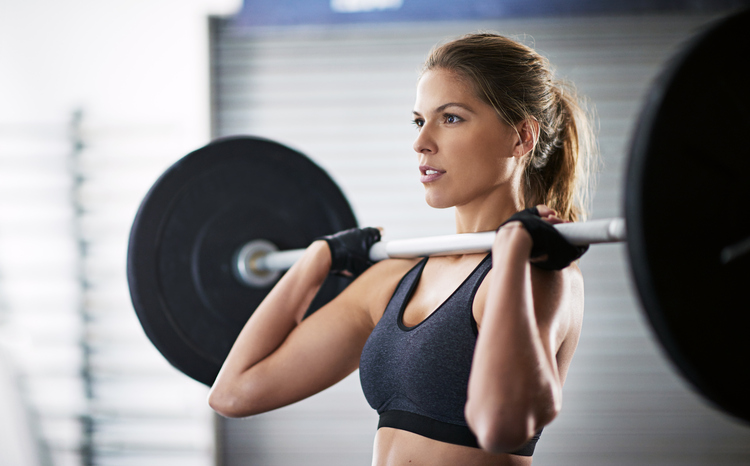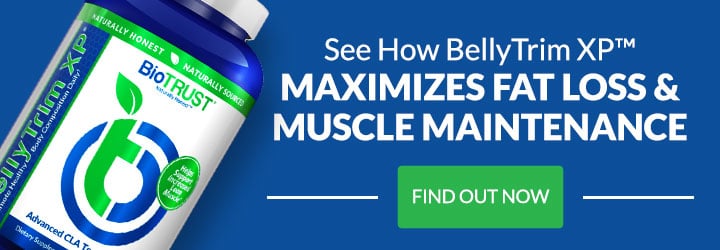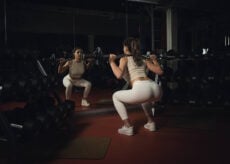Exercise Faceoff: Heavy vs. Light Weight Lifting for Weight Loss

After years and years of us fitness fanatics shouting off the rooftops, the mainstream is finally catching on: Strength training is an extremely effective tool for quality weight loss. That’s right, lifting weights isn’t just for bodybuilders, gym rats, and athletes, and its benefits extend far beyond packing on slabs of muscle or lifting insane amounts of weight. In fact, according to a recent article published in Time magazine, “Weight training is ridiculously good for you!” But when it comes to weight lifting for weight loss, what’s best: heavy or light weights?
Although it once seemed like a no-brainer, this is an area where we fitness-minded folks may have had it wrong. And we think that’s one reason why so many people have avoided lifting weights. That’s why it’s time for another exercise faceoff, pitting heavy vs. light weight lifting for weight loss…let’s get ready to rumble!
Not Just Any Weight Loss Will Do
For most of us, we’ve been brainwashed to be slaves to the scale. Along those lines, this may come as a bit of a shocker: There’s a potentially enormous difference between weight loss and quality weight loss. You see, quality weight loss places an emphasis on fat loss and preserving (or even increasing) calorie-burning lean muscle, which may be even more important as we get older. Better said, quality weight loss equates to FAT LOSS.
If you’re only watching for the number on the scale to go down, you could be missing out—big time. Of course, we all know that to lose fat, we’ve got to burn more calories than we eat. For most people, this means going on a (reduced-calorie) “diet.” And while cutting calories alone is markedly successful for weight loss, it invariably leads to muscle loss, which is closely connected to a laundry list of health concerns, such as:
- Weight regain
- Reduced metabolic rate
- Type 2 diabetes
- Metabolic syndrome
- Cancer
- Reduced strength
- Reduced bone mass
- Reduced mobility and physical capacity
- Frailty
- Reduced quality of life
- Mortality
- And the list goes on and on
What about exercise? Well, when it comes to weight loss, most people turn to cardio, or aerobic exercise. While cardio can indeed accelerate weight and fat loss (when combined with a weight-management program), it doesn’t protect precious lean muscle. In fact, cardio plus dieting often results in even greater losses in muscle than dieting alone.
Thankfully, I’ve saved the best news for last…there’s one tool in the ol’ toolbox that has been shown time and again to preserve that all-important calorie-burning lean muscle: Resistance training. In fact, when combined with a high-protein, reduced-calorie diet, strength training leads to fat loss and muscle gain. That’s what I call quality weight loss, and that’s why weight lifting for weight loss is a MUST. Oh, and let’s not lose sight of all the other important benefits of regular strength training:
- Increased metabolic rate
- Improved insulin sensitivity
- More strength
- Better balance
- Better physical function
- Stronger bones
- Healthier levels of inflammation
- Better markers of heart health
- Improved focus and cognitive function
- Less anxiety
- Better mood and increased feelings of well-being
- A better overall body!
Out with the Old, in with the New
The writing is on the wall, so to speak: Weight lifting for weight loss is a no-brainer. With that being said, there’s been a long-standing belief among the fitness community that, if you want to see results (such as increased muscle mass and strength), you have to lift heavy weights, which are commonly defined as >65% 1 repetition maximum (or the amount of weight you can lift just once). On the other hand, “light” weights would be those <60% 1RM.
I know those definitions may not mean much to you, so let’s put it a slightly different way. Although “heavy” and “light” are highly subjective, a heavy weight is probably one you could lift about 12 times—no more than 15. On the other hand, a light weight would be one that you could lift 15, 20, 25, or even 30 times. Until recently, position stands and guidelines made it perfectly clear that heavy weights were the only option for increasing muscle size and strength.
In other words, if you were going to include weight lifting for weight loss, you better be lifting heavy weights! But the funny thing about science is that it’s constantly evolving, and as evidence-based coaches and practitioners, we have to stay current with the research and keep an open mind. Along those lines, the winds of change are swirling, and the decades-old paradigm for resistance training is beginning to shift.
That’s right, the most recent research suggests that individuals—young and old, inexperienced and seasoned gym goers—experience similar increases in calorie-burning lean muscle by lifting heavy and light weights. In other words, you can use heavy or light weight lifting for weight loss.
Having said that, if your sole objective is to increase strength, then there’s no question that heavy weights still reign champion. However, lifting lighter weights, which can significantly boost endurance, can moderately increase strength (albeit to a lesser extent than heavy weights).
Weight lifting for Weight Loss: The Secret Sauce
So, if it’s not how much weight you lift, what’s the most important variable when weight lifting for weight loss? Your degree of effort. In other words, regardless of how much weight you feel comfortable lifting, the real key is to fatigue your muscles by taking each set to the point where you can’t do any more with good form (i.e., “failure at the end of each set”).
In other words, how hard you work is the secret sauce when trying to maximize weight lifting for weight loss. And it’s also important to use “progressive resistance,” which means you should try to challenge yourself a little more (either using heavier weights or doing more reps) over time. It’s also a good idea to exercise each of your major body parts 2 – 3 times a week, and “compound movements,” like squats, presses, and rows, that use multiple muscle groups give you the best bang for the buck.






